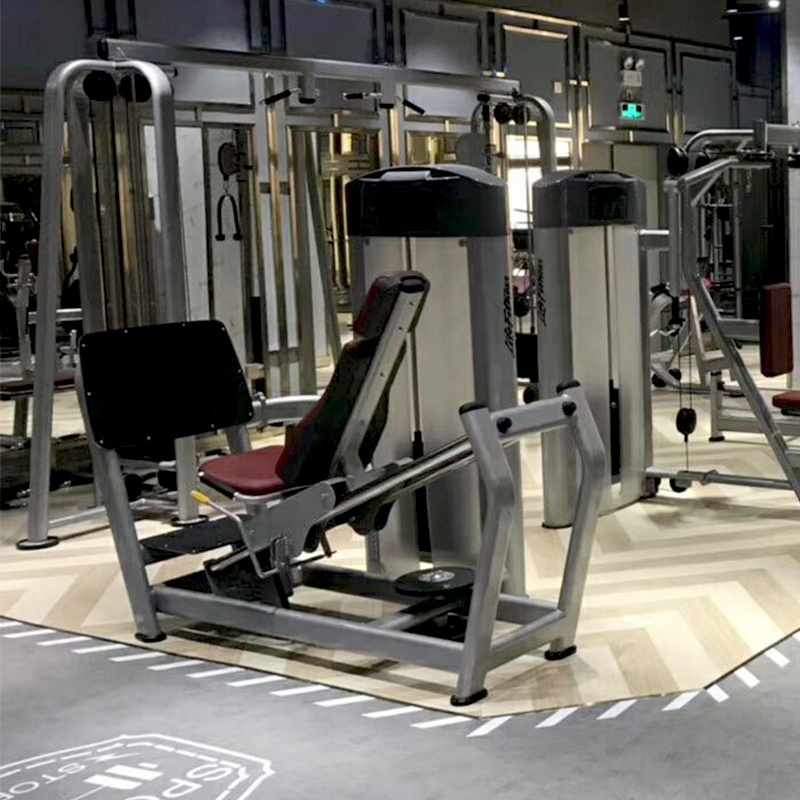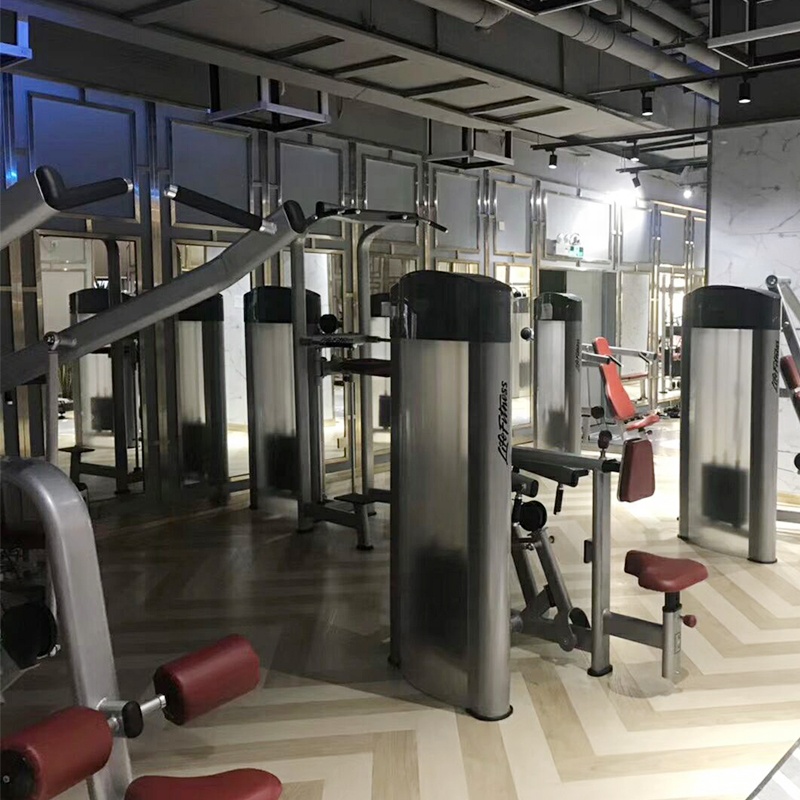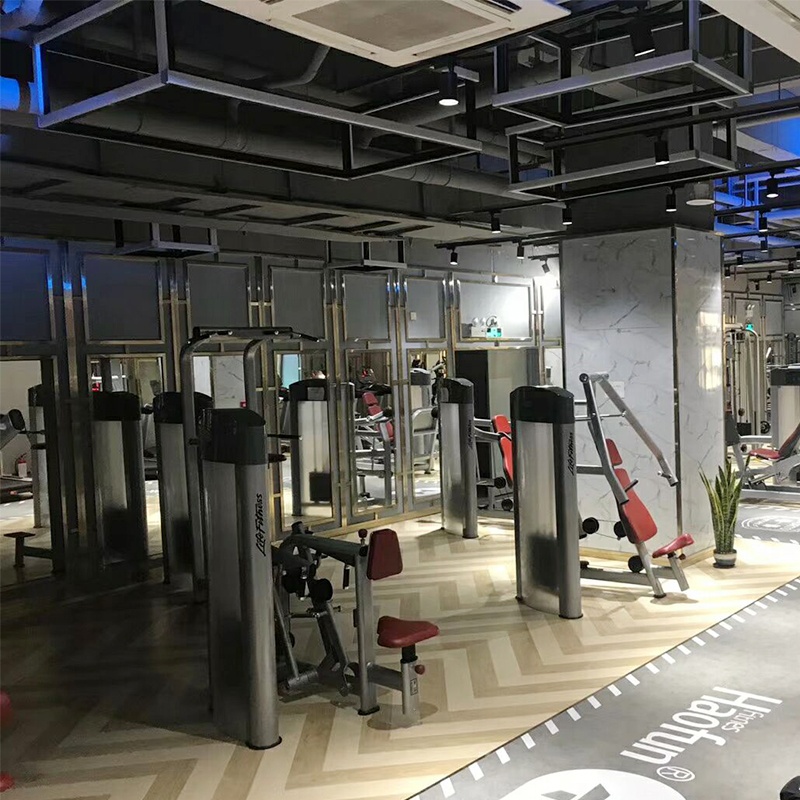Leg extension equipment is commonly used in gyms to target and strengthen the quadriceps muscles in the front of the thigh. This exercise involves sitting on a machine with a padded seat and backrest, and using your legs to extend and straighten the knees against resistance provided by a weight stack.
Benefits of using leg extension equipment in your workout routine include:
1. Targeted muscle activation: Leg extensions isolate the quadriceps muscles, helping to strengthen and tone this important muscle group.
2. Improved knee stability: Strengthening the quadriceps can help improve knee stability and reduce the risk of injuries.
3. Balanced leg strength: Leg extensions can help balance out the strength of the muscles in the lower body, particularly if you are focusing on other muscle groups like the hamstrings and glutes.
4. Enhance athletic performance: Strong quadriceps are essential for many athletic activities, such as running, jumping, and squatting. Leg extensions can help improve your performance in these activities.
When using leg extension equipment, it's important to start with a light weight and gradually increase the resistance as your strength improves. Make sure to maintain proper form throughout the exercise, keeping your back flat against the backrest and avoiding any jerky or swinging movements.
Incorporating leg extensions into your workout routine can help you build lower body strength, improve muscle tone, and enhance your overall fitness level.
A leg extension machine is a piece of exercise equipment commonly found in gyms and fitness centers. It is designed to target and strengthen the muscles in the front of the thigh, specifically the quadriceps. The machine typically consists of a seat, backrest, and a lever arm with a padded bar that rests on the lower legs, just above the ankles.
To use the leg extension machine, you typically sit on the seat with your back against the backrest and adjust the machine to fit your body size. Your feet should be positioned under the padded bar, and your knees should be aligned with the pivot point of the machine.
To perform the exercise, you extend your legs by straightening your knees and lifting the padded bar. Hold the extended position briefly, then slowly lower the weight back down to the starting position. It's important to maintain control throughout the movement and avoid using momentum to lift the weight.
The leg extension machine is commonly used as a targeted exercise for the quadriceps, helping to strengthen and tone the muscles in the front of the thigh. It can be adjusted to accommodate different fitness levels by changing the weight or the number of repetitions performed. However, it's important to use proper form and not overload the machine with excessive weight to prevent strain or injury.How much can the average person do on leg extension? The maximum number of leg extensions that an average person can perform depends on various factors such as age, gender, fitness level, muscle strength, and previous experience with weightlifting or resistance exercises. For most sedentary individuals, a good starting point would be around 10-15 repetitions with a light to moderate load, which might be bodyweight or a few kilograms.
However, if you're referring to competitive powerlifters or athletes who have trained extensively in leg extensions, they can perform significantly more repetitions with heavier weights, often reaching into the triple digits. For example, a strong weightlifter might be able to perform 40-60 repetitions with their one-rep max (1RM) for leg extensions.
It's important to note that progression occurs over time with consistent training, so as you become stronger and more experienced, you may increase the number of repetitions or the weight lifted. Always consult with a personal trainer or fitness professional to ensure proper form and progression in your exercise routine.What are the disadvantages of leg extension machine? Like any exercise equipment, the leg extension machine has its advantages and disadvantages. Here are some potential drawbacks to consider:
1. Limited muscle activation: While the leg extension machine primarily targets the quadriceps (quads), it may not engage other supporting muscles such as hamstrings, glutes, and calf muscles to the same extent. This can lead to an imbalanced workout.
2. Overuse injury risk: If you perform too many repetitions or use heavy weights without proper form, you may increase your risk of strain or injury to the knee joint, quadriceps tendons, or patellar tendon.
3. Joint stress: The repetitive flexion and extension of the knee during leg extensions can place stress on the knee, especially if you have pre-existing conditions like arthritis or ligament instability.
4. No proprioception training: Leg extension machines typically don't provide the same level of body awareness and balance training as bodyweight exercises or free weights, which can be important for overall strength and stability.
5. Limited variety: If you're looking for a more versatile lower body workout, a leg extension machine might not offer the range of motion or muscle groups targeted by exercises like squats, lunges, or step-ups.
6. Cost and space: Commercial gym machines can be expensive, and home gyms may require dedicated space. If you have limited resources or space, you might prefer alternative leg exercises that don't require specialized equipment.
7. Learning curve: Beginners might find it challenging to master proper form and technique on the leg extension machine, which could lead to suboptimal results or increased risk of injury.
It's essential to incorporate a balanced workout routine that includes various exercises targeting different muscle groups to ensure a well-rounded fitness program. Consult with a professional trainer or physical therapist to design a safe and effective leg workout plan that suits your needs and goals.






